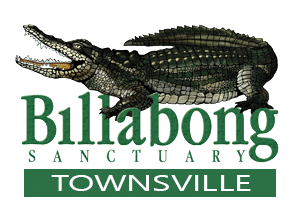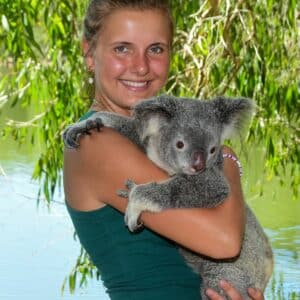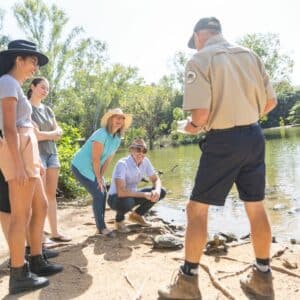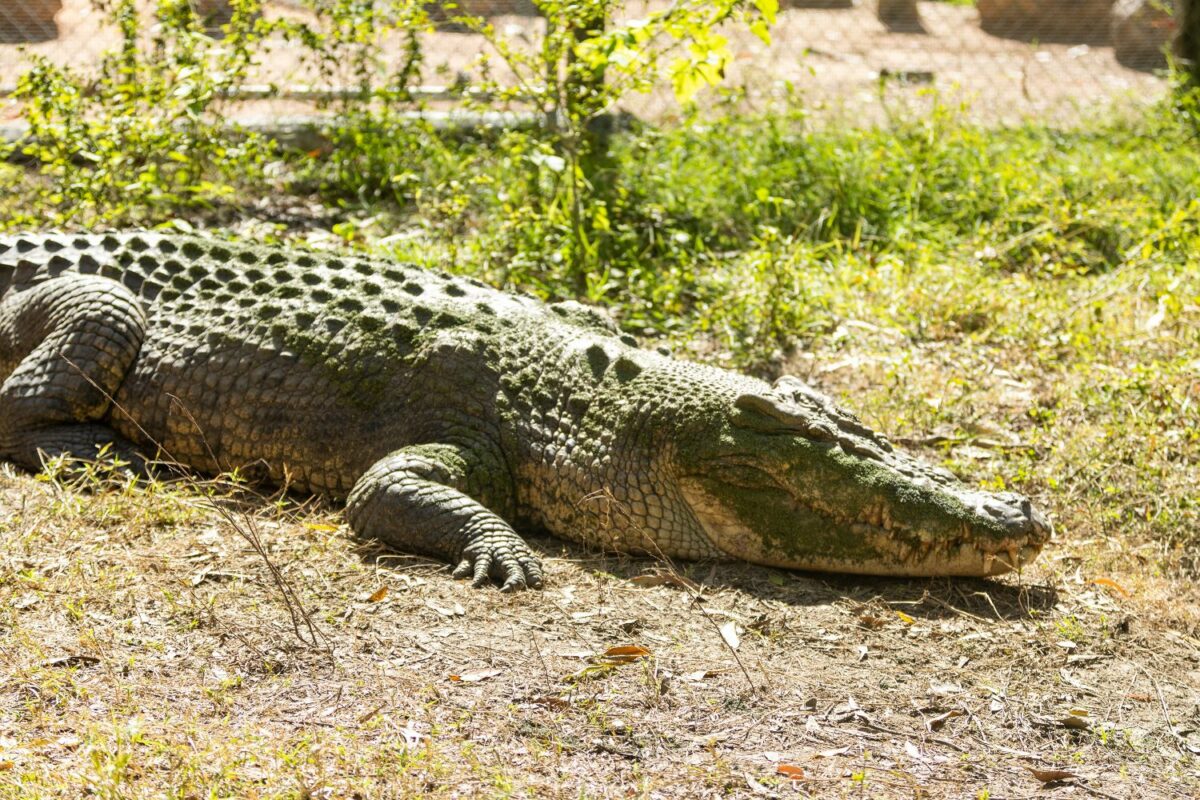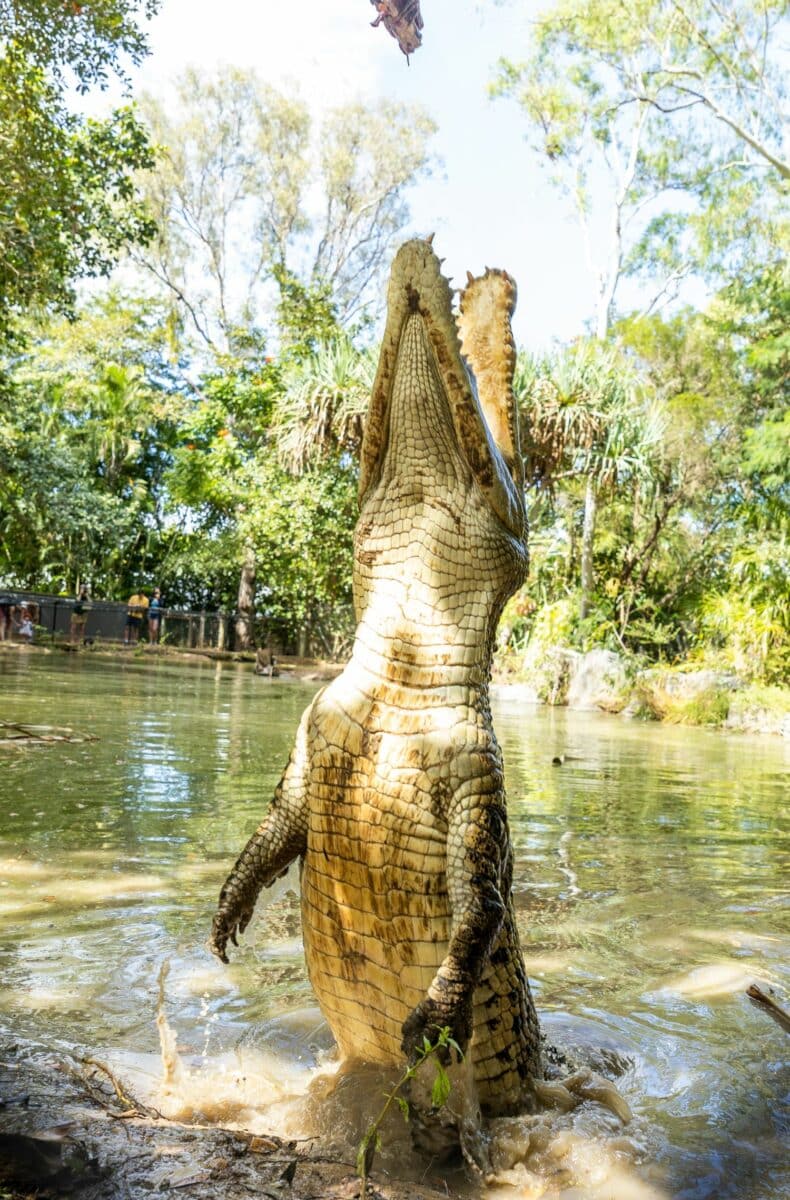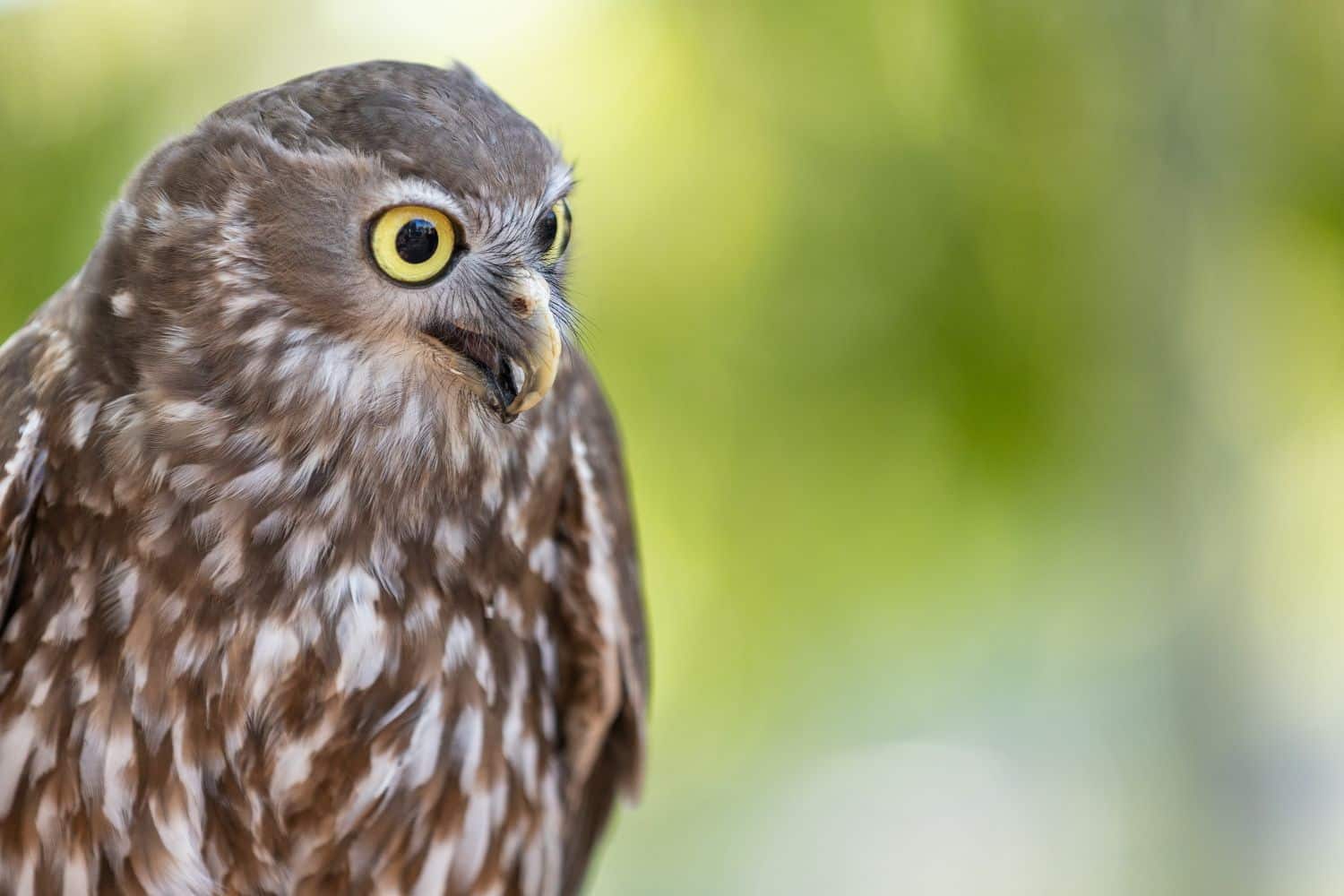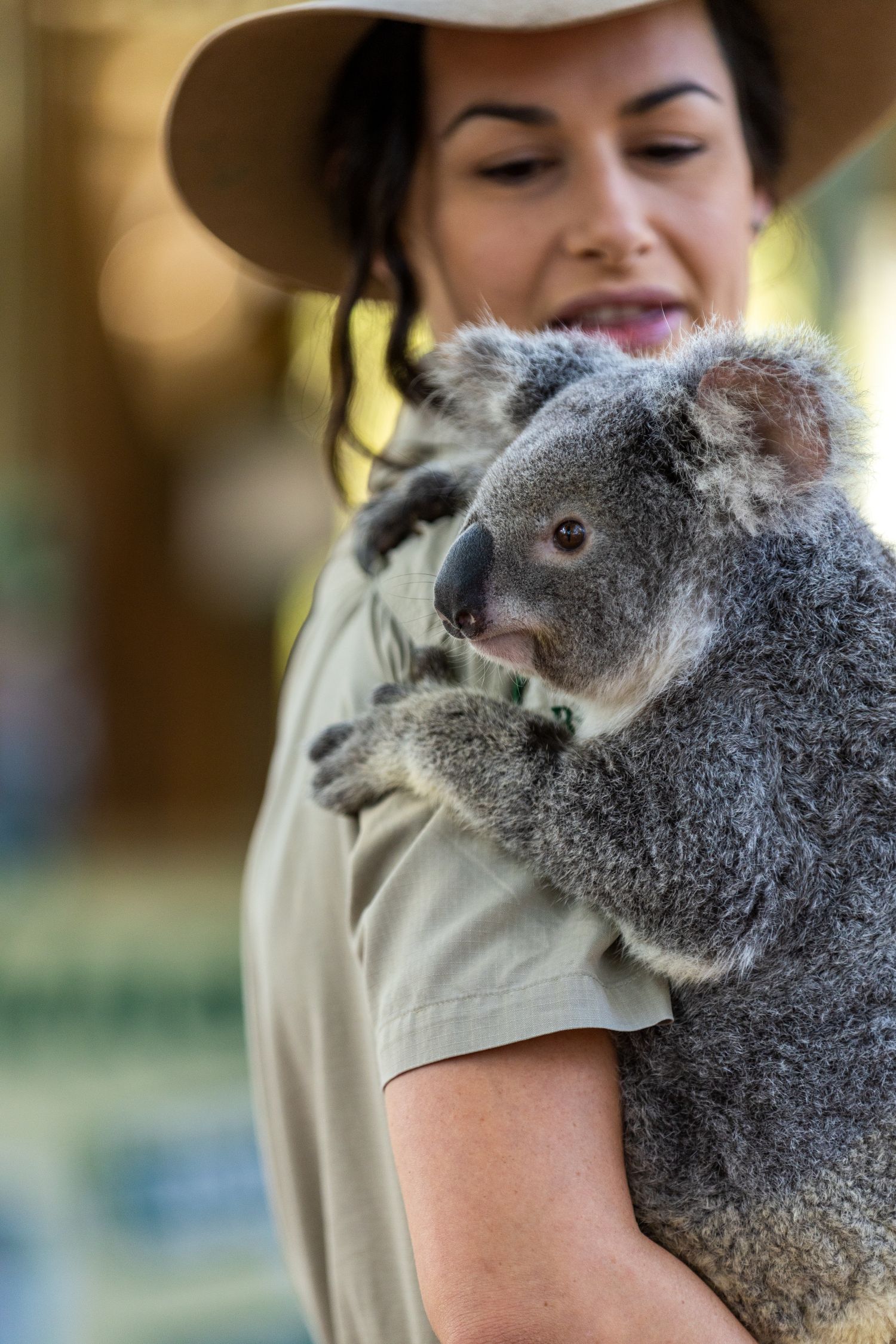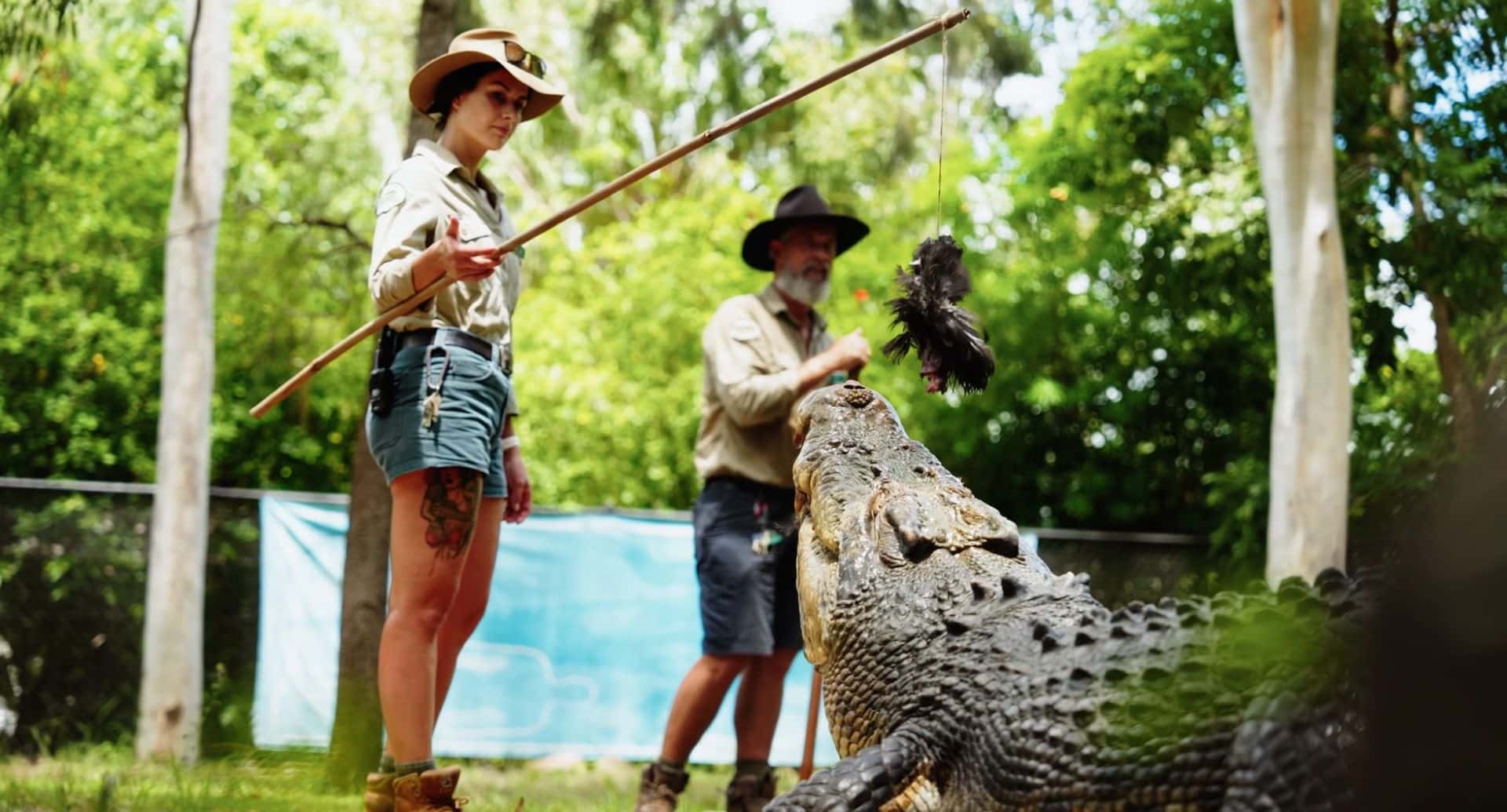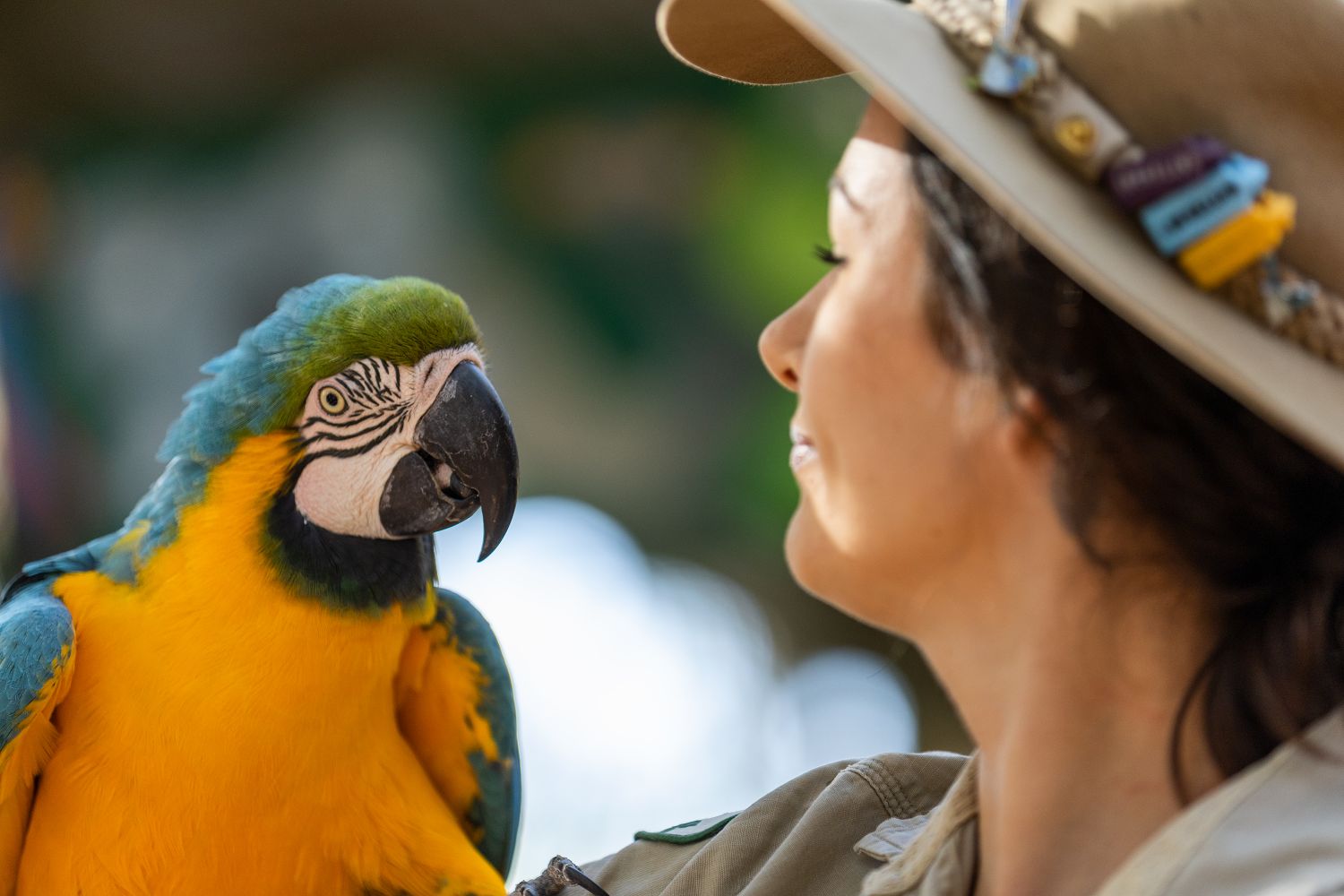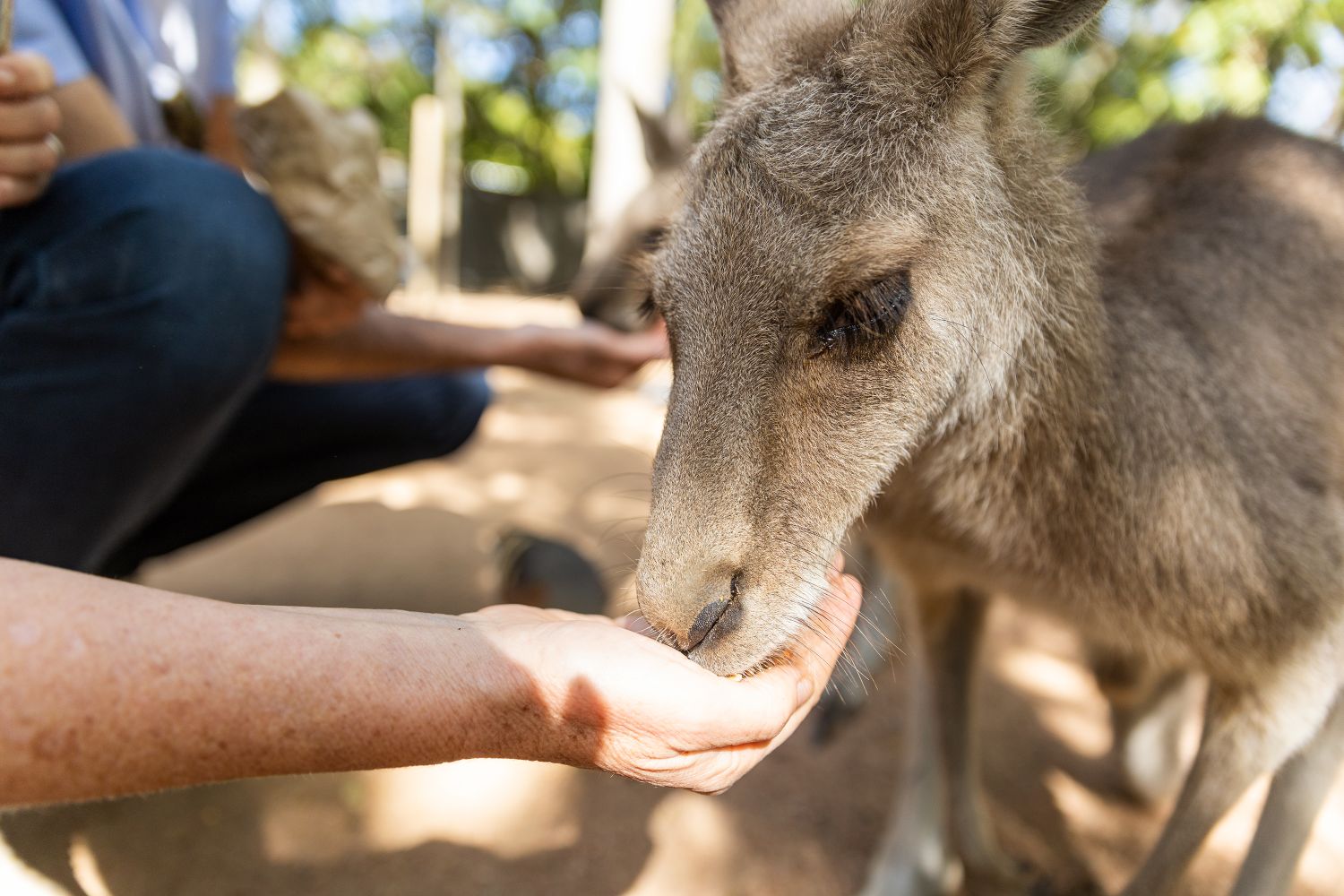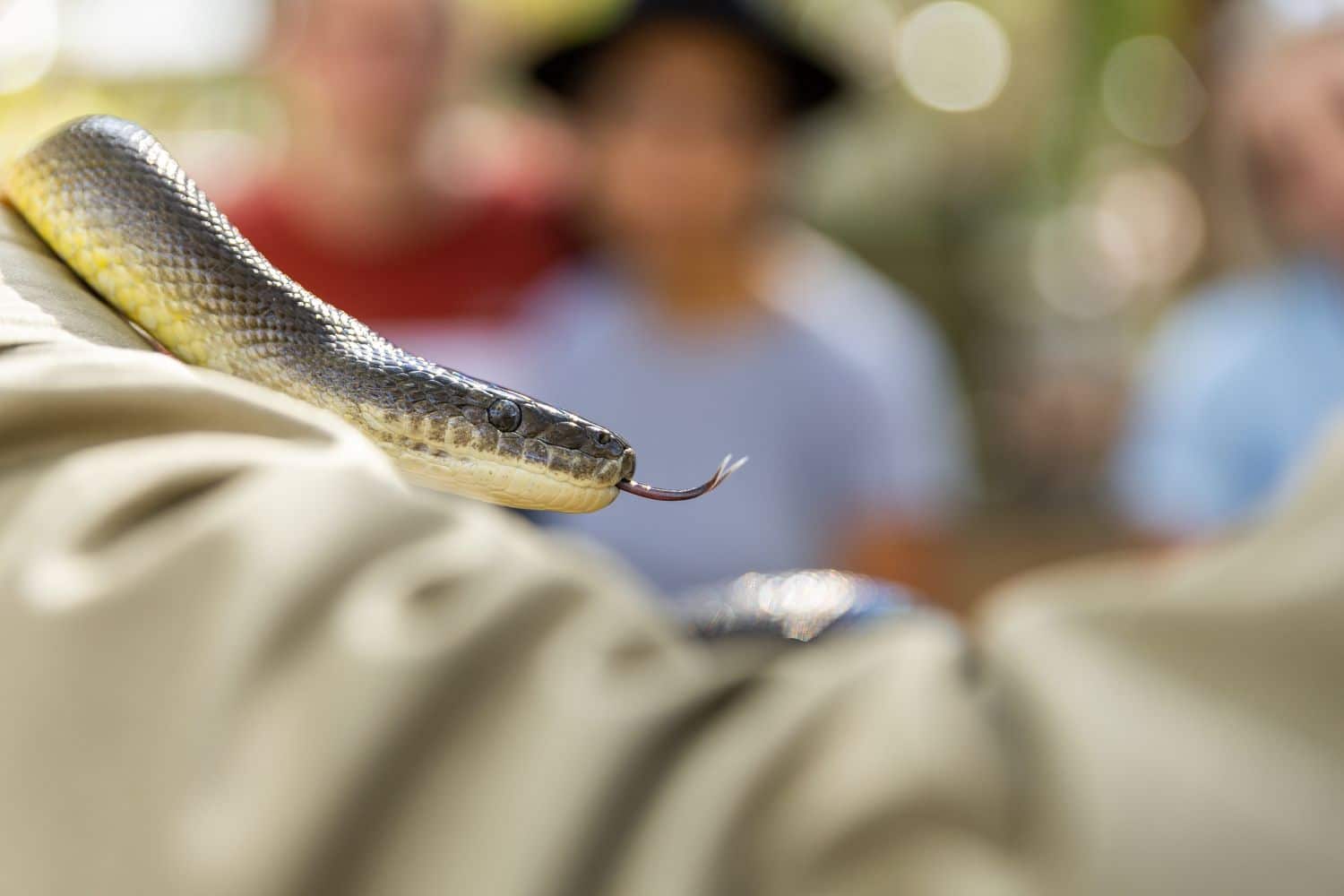CROCODILES OF THE WORLD
Australia is home to two species of crocodiles, the Estuarine Crocodile and the Freshwater Crocodile. Both belong to the reptile family Crocodylidae (the ‘true crocodiles’), members of the sub-class Archosauria.
LIVING DINOSAURS
Archosaurs were the ‘Ruling Reptiles’ which dominated life on earth hundreds of millions of years ago. Along with dinosaurs such as ichthyosaurs and plesiosaurs lived many ancient species of crocodiles, including ‘Super Crocs’ over 10 metres (33 feet) long! When most dinosaurs disappeared during the mass extinctions at the end of the Mesozoic, three groups of crocodilians survived. They have remained virtually unchanged to the present day. These are the true crocodiles (Crocodylidae), the alligators and caimans (Alligatoridae), and the gharials and false gharials (Gavialidae).
These subfamilies differ mainly in the shape of the head and snout.
True crocodiles have narrower snouts than alligators, and when they close their jaws the enlarged fourth tooth on the lower jaw is exposed. There are 13 species, found throughout equatorial regions of the world.
Alligators have broad, shovel-shaped snouts. When they close their jaws, all the teeth of the upper jaw fit into sockets on the lower jaw. Alligators are found in the USA and China, and five species of caiman inhabit Central and South America.
The gharial, found only in India, has a greatly elongated narrow snout. On the male there is a bulb-like appendage on the tip. False gharials are found in Malaysia and Indonesia.
OUR AUSTRALIAN ESTUARINE CROCODILE
The Estuarine Crocodile is the largest living reptile in the world! Also known as the Saltwater or Indo-Pacific Crocodile, it is found from India eastwards to Papua New Guinea and throughout SE Asia.
In Australia this crocodile can be found throughout the northern coastal fringe and adjacent rivers, anywhere north of about Rockhampton in Queensland, all around the coast of the Northern Territory and as far south as Broome in Western Australia.
The common names are misleading, in that Estuarine Crocodiles are not confined to salty or brackish water but are also found far inland in freshwater billabongs, rivers and swamps.
HOW BIG DO THEY GET?
The largest reliably documented Estuarine Crocodile in Australia was 6.7 m in length (21.75 ft), although there have been credible reports of much larger individuals. An average size for a female just reaching breeding age at about 12 years would be 2.3m (7.5 ft), and that of a mature male would be 3.35m (nearly 11 ft) at around 16 years of age. Animals in captivity can mature in half the time. Lifespan could be as long as 70 years in the wild, and much longer in captivity.
Here at Billabong Sanctuary, we have individuals ranging from hatchlings about 30cm long (1 ft) weighing less than 100 grams (3.5 ounces), to 4.3 metre-long Riley (14 ft), a 29-year-old male who weighs well over 450 kilograms (nearly 1000 pounds).
TRUE SURVIVORS
What are some of the features that have made crocodiles so successful in their tropical aquatic environment?
Crocodiles have a heavy muscular body, covered with scales. These scales are reinforced on the back by bony plates called osteoderms. This is like having armour-plated skin.
Raised scales along the tail, called scutes, increase swimming efficiency by channelling water to each side.
The limbs are relatively short and muscular, and are held along the body while the croc is swimming, propelled through the water by side-to-side motion of the powerful tail.
The skull is strongly built and armed with dozens of conical teeth. They eyes are close together and point forward, giving binocular vision. There is a flap of skin at the back of the throat This flap can close off the back of the mouth, so the croc can open its mouth underwater without letting water to go down its throat.
Being reptiles, crocodiles cannot regulate their body temperature from within, but must adapt to their environment in order to maintain an optimal temperature range. They can be seen basking on mudflats, warming their bodies in the winter sun, or will move into the water or into shady areas during the intense heat of a tropical summer to avoid overheating.
The skull is strongly built and armed with dozens of conical teeth. They eyes are close together and point forward, giving binocular vision. There is a flap of skin at the back of the throat This flap can close off the back of the mouth, so the croc can open its mouth underwater without letting water to go down its throat.
Being reptiles, crocodiles cannot regulate their body temperature from within, but must adapt to their environment in order to maintain an optimal temperature range. They can be seen basking on mudflats, warming their bodies in the winter sun, or will move into the water or into shady areas during the intense heat of a tropical summer to avoid overheating.
WHAT DO THEY EAT?
The diet of Estuarine Crocodiles varies with their habitat and their age. Very young crocodiles in tidal rivers eat small mud crabs, prawns and insects during the dry season, but mostly insects as they become available during the wet season. Juveniles in freshwater environments feed mainly on insects.
Larger crocs up to 2m (about 6 ft) long in tidal waters continue to eat crabs and prawns, as well as small birds, aquatic reptiles and rodents which venture down to the water’s edge. In fresh waters they eat more fish as well as a variety of birds, mammals, lizards and turtles.
Estuarine Crocodiles over 2m (more than 6′) long will eat a wide variety of prey; in fact, pretty much any animal unlucky enough to venture into their territory is a potential meal. This includes vertebrates such as lizards, fruit bats, wallabies, domestic livestock, and even water buffalo.
Crocodiles over 3m long (about 10 ft) will not hesitate to take humans if given the opportunity; to them, we are simply another item on the menu. Rivers along North Queensland coast are posted with signs warning of the danger of swimming in these waters where crocs may be present.
DEADLY PREDATORS
What are some of the adaptations that make crocodiles such efficient predators?
Crocodiles are ambush hunters, so well adapted to this method of feeding that their biology has remained largely unchanged for the past 65 million years. Preferring to hunt during the night, when prey animals are most likely to come to the water’s edge to drink, they can remain submerged for up to two hours at a time, watching… and waiting…
A transparent eyelid that covers the eye when underwater and special magnifying crystals within the eyeball give the croc excellent vision from within and above the water. When it is swimming, only the eyes, ears and nostrils break the surface of the water, giving little hint of the size of the animal below.
The crocodile advances silently towards its prey, then suddenly lunges at terrific speed up out of the water, slamming its jaws around the victim with enormous force. It then drags the prey into deeper water, rolling and thrashing until resistance stops, and a piece of meat of manageable size remains in the crocodile’s mouth. The whole process is swift and terrifying. This is truly a formidable predator.
Even though very large animals may be attacked, the capacity of the crocodile’s stomach is relatively small compared to the size of the animal; even a fully mature male would have a stomach barely the size of a soccer ball. Crocodiles swallow stones for ballast. These gastroliths remain in the stomach and may help to break down their food, in the same way that birds swallow grit to help grind up food in the gizzard.
BREEDING
At the onset of the wet season (which may begin in tropical Australia anytime from October to January) the female Estuarine Crocodile will scrape together a mound of vegetation and mud close to a permanent body of water. Courtship behaviour includes presenting her neck to the male in a submissive gesture.
Mating occurs in the water, and four to six weeks later she will lay between 30 and 70 eggs in the centre of this mound nest. As the vegetation breaks down, the heat of decomposition helps maintain the incubation temperature of the nest. In turn, this incubation temperature determines the sex of the baby crocodiles. Incubation at 31.7 C (just over 89 F) produces male young; slightly lower or higher temperatures produce mostly females. If the temperature goes higher than about 34 C (93.2 F) deformities and death of embryos will occur.
Only about 20% of eggs will produce viable young. Many embryos drown in the shell because of flooding during the wet season.
HATCHING
The female remains close to the nest for 2 to 3 months, guarding the eggs from predators such as feral pigs, goannas or humans. When they are ready to hatch, the baby crocodiles start to chirp from inside the egg. They break open the shell with the ‘egg-tooth’ on the end of their snout. The female will excavate the eggs and may even carry the young down to the water in her mouth. Compared to her ferocity while hunting, she shows surprisingly gentle behaviour at this time. She will remain close to her babies for several months; nevertheless, only about half will survive their first year. Predation by fish, turtles, kites and even other crocodiles causes heavy mortality.
RAISING CROCODILES AT BILLABONG SANCTUARY
Here at Billabong Sanctuary, we have established several successful breeding pairs of Estuarine Crocodiles. There have been a few setbacks in the past, when the resident male would not accept a female introduced into his territory, but now several couples have settled in happily together.
Our females come mainly from crocodile farms, and average 18 years of age. Nesting at the Sanctuary occurs in December and January, with an average of 45-55 eggs per clutch. We remove the eggs from the nest as soon as possible and incubate them here at the Sanctuary at 31.7 C (just over 89 F) to produce all-male babies. If the eggs are fertile, we usually have about a 90% success rate– much higher than that in the wild!
Most of our hatchlings are traded with other wildlife parks for animals such as koalas; a few are kept here at the Sanctuary to give visitors the thrill of holding a real live crocodile.
STATUS IN THE WILD
Up until the early 1970s, it was legal to hunt crocodiles in Australia, and numbers in the wild seriously declined. They are now protected in all states, and populations have recovered so well that they are not considered to be in danger. The main ongoing threat to their future survival is loss of habitat as wetlands are drained for development.
Crocodiles are raised on farms in all states, and in the Northern Territory, controlled numbers of eggs may be harvested from the wild.
This puts an economic value on their habitat, which is a strong incentive to preserve the natural environment.
Crocodile farms and wildlife parks such as Billabong Sanctuary give thousands of visitors every year the opportunity to see these amazing predators at close hand and to learn more about our ‘living dinosaur’.
SOME COMMON MYTHS EXPOSED!
It is not surprising that an animal as well-known and as fearsome as the Estuarine Crocodile has inspired tall tales of its awesome behaviour. Here we hope to set the record straight on some commonly held beliefs about crocs.
Myth number 1: “Crocodiles go into the ‘death roll’ to kill their prey.”
In fact, the incredible force of the crocodile’s powerful jaws and large cone-shaped teeth slamming into a prey animal will almost certainly kill it outright. If the animal is too large to swallow whole, the croc may then retreat into deeper water to roll and thrash around, but the purpose is to break off a manageable chunk of meat from the unfortunate victim, which the crocodile can then maneuver into position and swallow.
Myth No. 2: “Crocodiles will store uneaten portions of a carcass under a fallen log in order to tenderize it for later consumption.”
In fact, after a crocodile has eaten its fill of a large animal, the rest of the creature’s body will be abandoned, and may drift downstream and become lodged under debris at the water’s edge. If the crocodile does happen to visit that site at a later time, he is more likely to be hunting turtles or fish which have been attracted to the rotting carcass.
Myth No 3: “Crocodiles can travel swiftly overland.”
In fact, crocodiles move slowly and awkwardly on dry land, averaging speeds of only 2 to 4km per hour (less than 3 mph). Their limbs are very short, and the heavy tail drags on the ground. In extreme circumstances they may pour on a burst of speed, but they are very quickly exhausted by this strenuous exertion.
Myth No 4: “A large crocodile will always take a large prey animal such as a cow or water buffalo.”
In fact, crocodiles are opportunistic feeders, and will not expend energy on attacking and subduing a large animal unless absolutely necessary. If a small animal happens to venture within range, they will attack and eat that animal.
Myth No 5: “Crocodiles are evil, mean and malicious creatures.”
In fact, these are human failings attributed to an animal with a very small brain. A crocodile spends its days trying to maintain a comfortable body temperature, defending its territory, and hunting for food. Any attack on other animals is made for the purpose of defense or feeding. A crocodile will not waste precious energy on random, meaningless attacks.
Myth No 6:” A crocodile will lie in wait until a potential victim (such as a human) establishes a pattern of behaviour, and will then attack.”
In fact, a crocodile has a very small brain and would certainly be incapable of such complex reasoning. An animal (including a human) which is attacked is simply in the wrong place at the wrong time; that is, within the crocodile’s territory while he happens to be hungry.
Myth No 7: “You are safe in crocodile-infested water as long as you don’t go in deeper than your knees.”
In fact, a crocodile can approach a potential prey animal in very shallow water, and even on dry land. It will strike with incredible speed, and even if you saw it coming at the last minute, you would not be able to scramble out of the water to safety in time.
Myth No 8: “A crocodile uses its tail as a weapon.”
In fact, the tail is used mainly for swimming, propelling the crocodile through the water with a powerful side to side motion while the limbs are held against the body.
When hunting or fighting, the crocodile uses its powerful jaws and teeth to attack other animals.
Myth No 9: “There hasn’t been a croc in this creek for 20 years!”
Crocodiles live in murky water which hides them from prey animals, or in freshwater billabongs with large floating mats of vegetation that provide hiding places. They remain submerged for up to 2 hours at a time, and even when they do come to the surface, often just the nose and eyes are visible above the water. The colour of the scales blends in almost invisibly with the muddy water. If they have been basking on a mudbank, crocodiles will quickly slip into to the water at the approach of a potentially dangerous object (such as a boat). Therefore, sightings are rare, even in waters where crocodiles are known to live.
Furthermore, as young males mature, they are driven from their territory by larger, more dominant males. They will move out of a river into the ocean, and travel along the shore in search of an undefended area. A river uninhabited by a crocodile one year could very well become home to a crocodile the next year.
Just because you’ve never seen one, it is not safe to assume that the local swimming hole or fishing spot does not harbour a resident croc!
